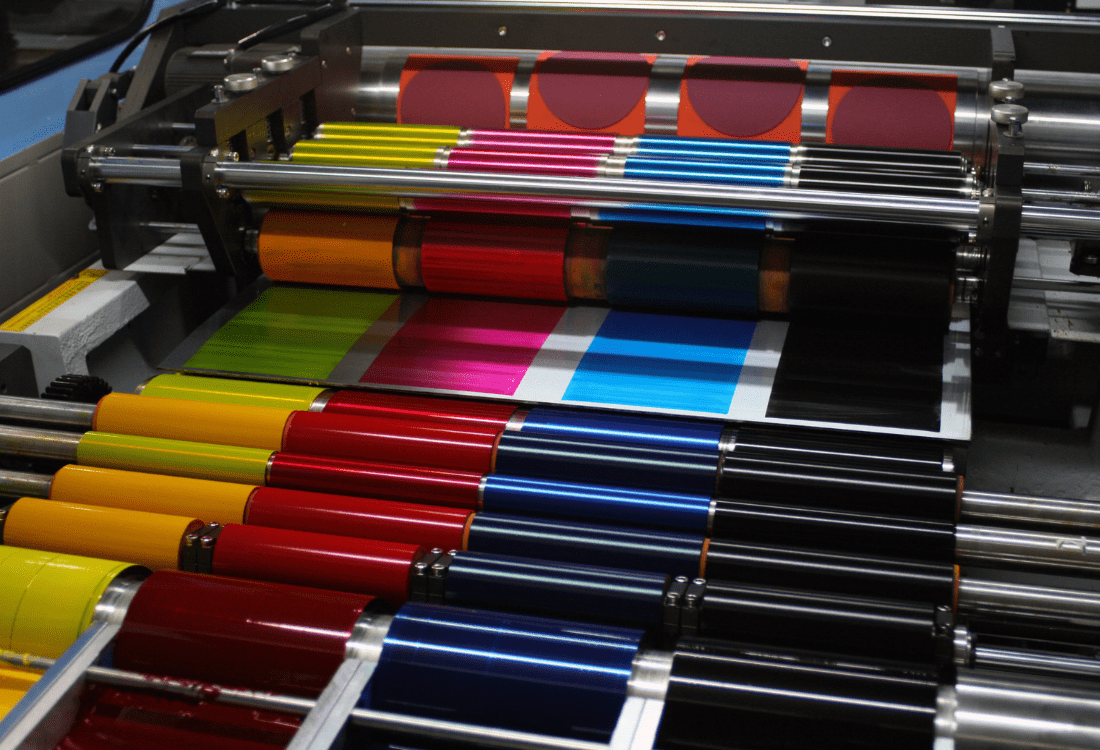Can Eco-Friendly Inks Help Digital Printing Lead Sustainability?

The drive towards greater sustainability in digital printing usually focuses on two areas. Firstly, the energy used to create printed material, which directly impacts the provider’s carbon footprint. The more energy-efficient the process is – e.g. by harnessing renewable power from wind turbines and solar panels – the less dependent it is on fossil fuels, and therefore more sustainable (as well as cheaper).

Big advances have been made in both these areas. However, the elephant in the room is the inks used in the digital printing process. Can eco-friendly inks help digital printing become more sustainable?
Is It Possible To Produce A Genuinely Eco-Friendly Ink?
Unfortunately, inks are the weak spot in the digital printing sector when it comes to sustainability. Many traditional printing inks contain harmful chemicals and volatile organic compounds (VOCs), or hazardous air pollutants (HAP), that are released into the atmosphere during production, or when the inks cure.
This problem hasn’t, so far, entirely gone away. However, the newest generation of toners are becoming increasingly environmentally friendly. Digital dry toners, for instance, despite using resins, emit no toxins into the environment, and have a highly efficient transfer rate, thereby minimising waste. Modern inks also contain fewer VOCs and potential hazards than earlier versions, and many make greater use of plant-based materials.
While there are currently no VOC-free inks and toners, minimising waste can reduce the level of environmental harm to an absolute minimum. Investing in more efficient and high performing digital toners is a good step towards greater sustainability, minimising energy consumption and greenhouse gas emissions and contributing to a more sustainable printing environment. Some eco-friendly inks and toners are also designed to be more easily recycled, promoting a more circular economy and reducing waste.
Digital Printing Sustainability: The Outlook
Having seen where the print industry is today compared to how it was 30 years ago, we have no doubt that the coming decades will see similar, if not greater advances toward sustainability and eco-friendly printing. Changes in the print industry are ultimately driven by consumer demand, and with an increased focus on sustainability and environmental responsibility, investment in eco-friendly inks and toner products is increasing year-on-year.
And let’s not forget that print media itself is often more sustainable than viewing something electronically. The huge server farms that power the email services, cloud storage solutions, and SaaS software used by businesses have an enormous carbon footprint from the electricity they use. Many of the businesses that went paper free for sustainability reasons 10 years ago are now reinvesting in printed media for exactly the same reason, especially now that print technologies can make more efficient use of both sides of a printed substrate.
Sustainable Digital Printing Solutions From TL Colour
If you’re interested in finding out more about our print solutions and our approach to eco-friendly digital printing, please get in touch today to find out more or to request a quote.
